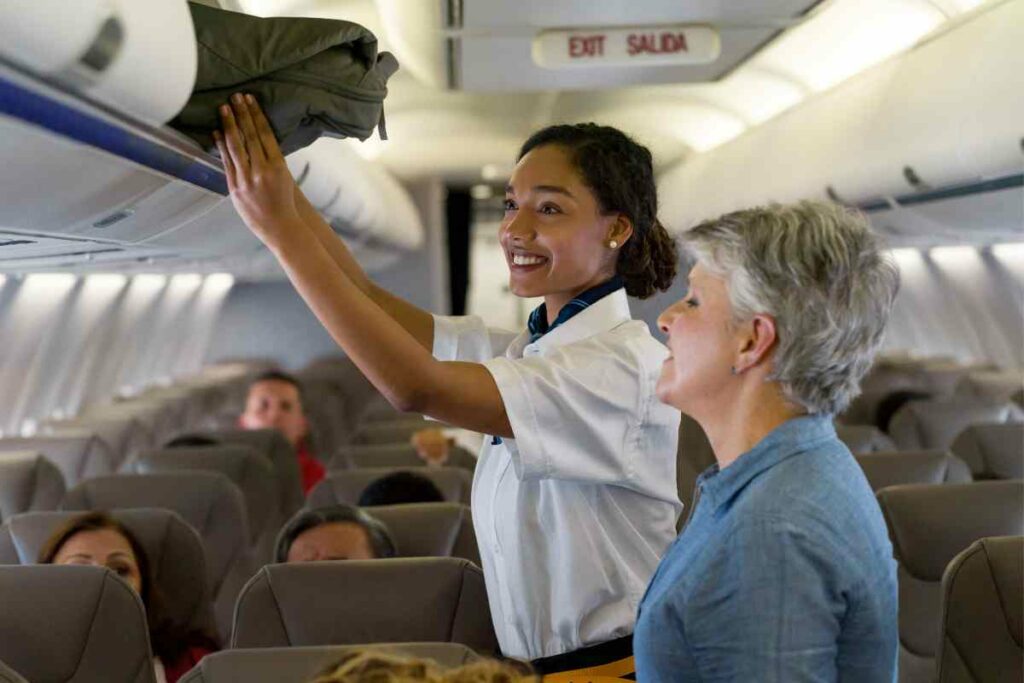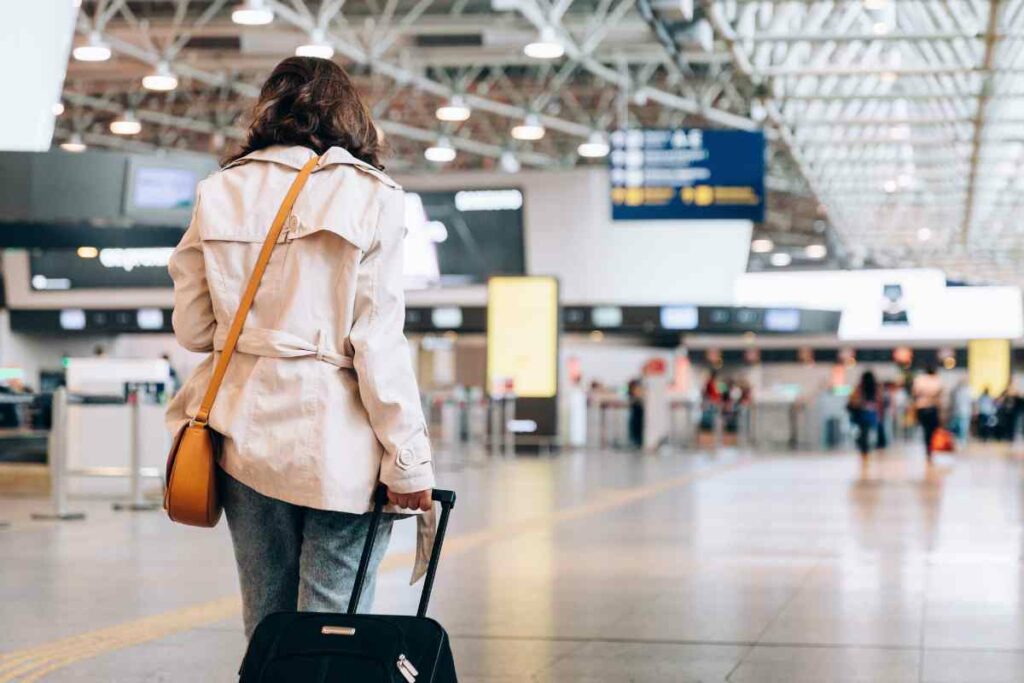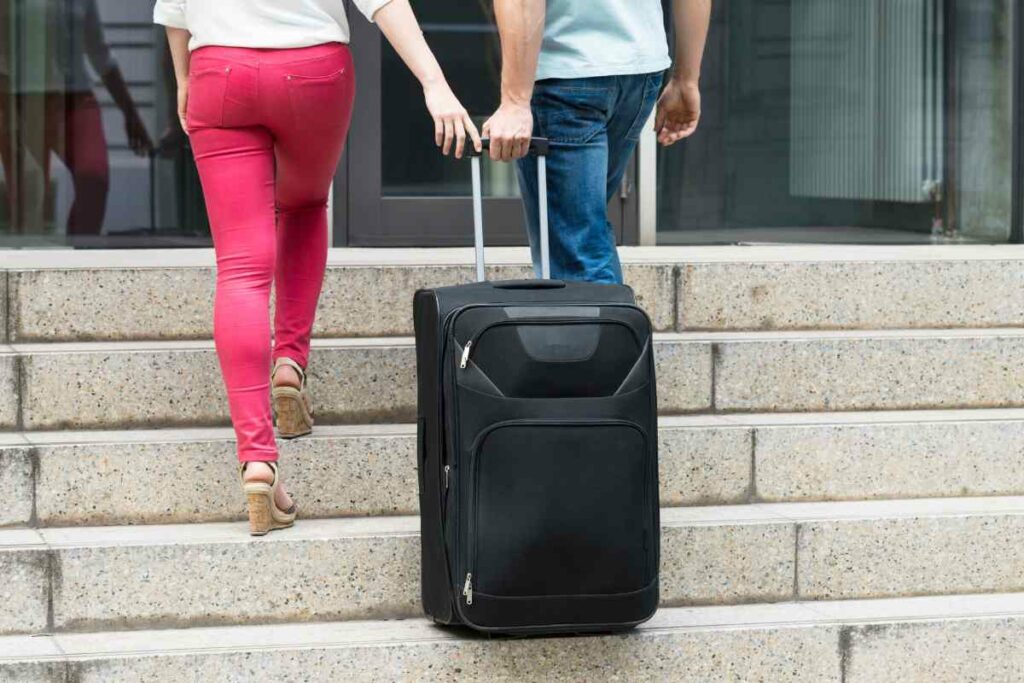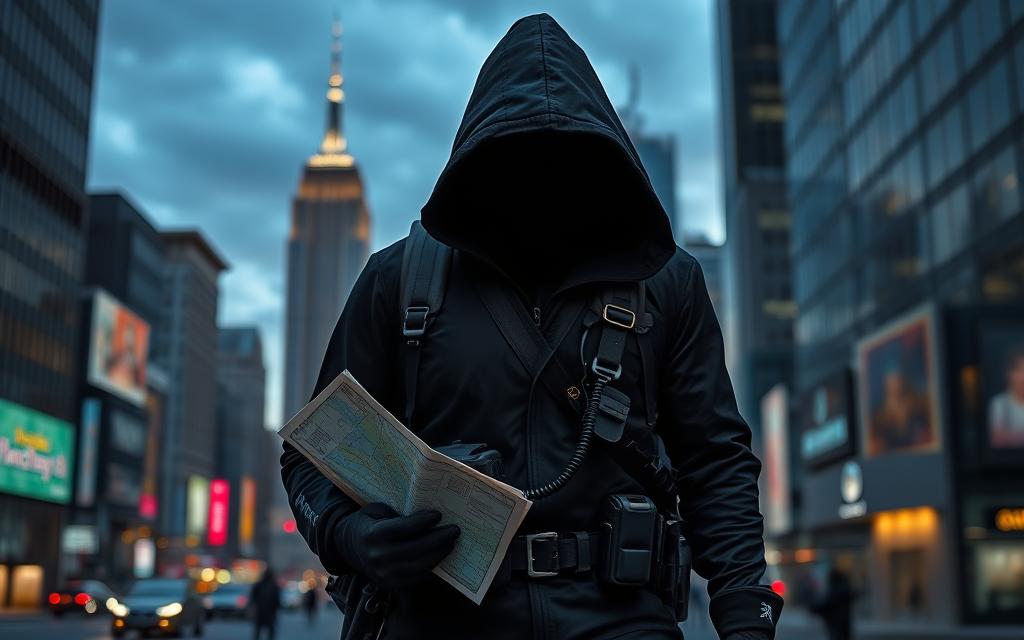Traveling can be stressful, but knowing what you can and cannot bring on a plane can make the process a lot smoother.
The Transportation Security Administration (TSA) has strict rules and regulations regarding carry-on luggage, but with the help of a trusty luggage restriction checklist, packing for your next flight can be a breeze.
The TSA updates their carry-on rules periodically, so it is important to stay up-to-date with the latest regulations.
This article will provide key takeaways on what you can bring on a plane in your carry-on, restricted items not allowed on a plane in your carry-on, items you’re not allowed to check or carry-on, and the penalties for not complying.
What You Can Bring on a Plane in Your Carry-On

Work Tools
Passengers are allowed to bring certain small tools such as screwdrivers, wrenches, as long as they are 7 inches or less in length.
Small scissors with blades measuring 4 inches or less from the pivot point are also permitted. All other tools should be securely wrapped (if sharp) and packed in checked baggage.
Liquids and Gels
Nearly all liquids, gels, and aerosols, including food, drinks, and toiletries, are allowed in carry-on luggage in quantities of 3.4 ounces or less.
This includes:
However, all liquid, gel, or aerosol items carried on, including food and drink, must be in a 3.4-ounce or smaller container and fit together in one single, quart-size, clear, zippered plastic bag.
Exceptions to these rules can include medically necessary liquids, such as insulin and baby formula.
Passengers should keep their travel habits in mind when choosing new luggage pieces to give themselves enough packing options to accommodate these items.
Smoking and Matches
Passengers may carry on common lighters and one book of safety matches, but strike-anywhere matches (those that can be lit by striking against any rough, dry surface) are prohibited in both checked and carry-on luggage.
No matches, including safety matches, are permitted in checked baggage.
Batteries
Dry batteries (AA, AAA, C, and D) can be packed in either carry-on or checked bags.
Lithium batteries with 100 watt hours or less may be carried on the plane or checked, as long as they’re in a device. Loose lithium batteries may only be carried on and cannot be checked.
Also helpful ?
Knitting and Needles
Materials for knitting and needlepoint are allowed in carry-on bags and checked luggage.
Passengers should make sure any knitting needles are wrapped or otherwise protected to prevent injuring luggage handlers and inspectors.
Wrapped Gifts
Wrapped presents can be carried on board, provided the contents meet safety and security regulations.
However, since security screeners may unwrap gifts for inspection, it’s advisable to leave presents unwrapped until reaching the destination.
Electronic and Tech Items
Small, portable electronic items that are smaller than a standard-size laptop, such as cell phones and tablet devices, do not have to be removed from baggage during screening.
Larger electronics, including laptops, full-size video-game consoles, full-size DVD players, must be removed from their cases, placed in a separate bin, and screened individually at security checkpoints.
Medication and Needles
All prescription and over-the-counter medications can be carried on board the aircraft in unspecified quantities.
Other medical necessities including but not limited to inhalers, EpiPens, canes, casts, blood-sugar test kits, crutches, liquid nutrition for passengers with a disability, and items used for medical or cosmetic reasons, such as mastectomy products, can also be packed in carry-on luggage.
These items must be declared to screeners before going through security and are subject to additional screening.
Baby Items
Baby formula, breast milk, juice, gel- or liquid-filled teethers, and canned, jarred, or processed baby food are permitted on board the airplane if a baby or a small child is traveling.
These items do not need to meet the 3-1-1 rule like other liquids/gels do, but must be removed from carry-on luggage, declared to screeners before going through security, and are subject to additional screening.
In addition to food and formulas, baby wipes, child car seats, and baby carriers can be taken through security and onto the plane.
Also read
E-Liquids
As long as the amount of e-liquid carried onboard is less than 3.4 ounces, it is allowed through security. Quantities larger than 3.4 ounces must be checked.
However, battery-powered e-cigarettes, vaporizers, vape pens, atomizers, and electronic nicotine delivery systems can only be taken onboard the aircraft in carry-on or on the person.
The FAA prohibits all of these devices in checked bags.
Razors
Both disposable and electric razors are allowed in either carry-on or checked luggage.
Wedding Dress and Braidsmade Outfits on Hangers
Passengers can carry a wedding dress through security and onto their flight, but should pack the dress carefully and thoroughly in a protected garment bag.
They should contact their airline to ask about their policy for stowing the garment safely in the cabin and whether it counts as their carry-on item.
In addition, passengers should arrive early to the airport to ensure they get through security and to the gate early enough to talk with an airline agent about stowing the dress onboard.
Pets
Small pets are allowed to travel with passengers through security checkpoints, but it’s the passenger’s responsibility to contact the airline for their specific policy.
Pets need to be taken out of their carrier (which will also need to go
Restricted Items NOT Allowed on a Plane in Your Carry-On

When packing for a flight, it is important to know which items are not allowed in your carry-on luggage.
The following items are prohibited by the Transportation Security Administration (TSA) and should be packed in checked luggage or left at home:
Sharp Objects
Sharp objects, including box cutters, ice axes, knives (excluding plastic or round-bladed butter knives), meat cleavers, razor-type blades, and scissors that exceed 4 inches, are not allowed in carry-on luggage.
Smaller scissors, however, are permitted. Any sharp objects in checked bags should be covered or securely wrapped to prevent injury to baggage handlers and inspectors.
Sporting Goods and Athletic Equipment
Many pieces of sporting equipment, such as baseball bats, golf clubs, ski poles, hockey sticks, lacrosse sticks, martial arts weapons, hiking poles, and tent spikes/poles, are prohibited from carry-on luggage and must be transported in checked baggage.
Exceptions include tennis rackets, fishing poles, snow shoes, and longboards. Bicycles are sometimes allowed on flights, but it varies by airline—check with your airline for details.
Self Defense Items
Self-defense sprays, such as mace or pepper spray, and other items, including billy clubs, black jacks, brass knuckles, kubotans, and other martial-arts weapons, are not permitted past security.
Gel-Type Candles
While solid wax candles are allowed in carry-on and checked luggage, gel-like candles can only be transported via checked bags.
Large Quantities of Alcohol (More Than 3.4 Ounces)
Any beverage with over 70 percent alcohol content, such as grain alcohol and 151 proof rum, cannot be checked or taken onto the plane in your carry-on bag.
However, you may pack up to five liters of adult beverages (more than 24 percent, but less than 70 percent alcohol) in unopened retail packaging in your checked baggage.
Guns and Ammunition
Firearms, BB guns, compressed-air guns (e.g., paintball markers), pellet guns, starter pistols, and replicas can be put in your checked luggage, but must be declared at check-in.
Firearms must be unloaded, packed in a locked hard-sided container, and declared to the airline at check-in.
Small arms ammunition must be securely packed in fiber, wood, or metal boxes, or other packaging specifically designed to carry small amounts of ammunition.
Ask the airline about limitations or fees. When in doubt, ask your airline about specific rules and regulations for checking firearms.
It is important to note that this list is not exhaustive, and the TSA may prohibit other items not listed here. For a comprehensive list of prohibited items, visit the TSA website or contact your airline.
Items You’re Not Allowed to Check OR Carry-On, So Leave Them at Home

Passengers are not allowed to bring certain items on commercial passenger aircrafts due to safety regulations.
Here are some examples of items that are not permitted:
- Alcoholic beverages over 140 proof, such as grain alcohol and 151 proof rum, cannot be checked or taken onto the plane in a carry-on bag.
- Flammable items like aerosol cans (except limited quantities of personal care items that are 3.4 ounces or less), butane, fuels, gasoline, gas torches, lighter fluid, strike-anywhere matches, flammable paints, turpentine, paint thinner, arc lighters, plasma lighters, electronic lighters, E-lighters, and replicas of incendiaries are not allowed on passenger airlines.
- Explosive materials such as fireworks, flares, hand grenades, blasting caps, dynamite, and replicas of explosive materials cannot be transported in any way on passenger aircrafts.
- Chemicals like chlorine, bleach, spillable batteries, spray paint, fertilizers, tear gas, and fire extinguishers are considered dangerous and are not permitted on commercial passenger aircrafts.
- Outdoor and wildlife safety products like bear bangers (intended to scare away bears without harming them) and bear spray are not allowed on commercial aircraft.
It is important to note that this list is not exhaustive.
Passengers should always check with their airline and the TSA’s website for the most current list of prohibited or restricted items before traveling.
Penalties for Not Complying
The Transportation Security Administration (TSA) takes security rules seriously and imposes fines of up to several thousand dollars for attempting to carry on certain weapons or other dangerous materials.
The TSA may impose civil penalties of up to $14,950 per violation per person. Repeat violations will result in higher penalties.
For more information on the specific penalties that may be imposed on individuals for prohibited items violations and violations of other TSA regulations, refer to the TSA’s Civil Enforcement page.
Final Thoughts ?
Understanding carry-on luggage restrictions is essential for a smoother travel experience. The TSA’s guidelines evolve, emphasizing the need to stay updated.
This article provided insights into permissible items, such as small tools and liquids under 3.4 ounces.
It also highlighted restricted items like sharp objects, sporting goods, self-defense items, and others, which should be placed in checked baggage.
Certain items are outright prohibited, including high-proof alcohol, flammables, explosives, and chemicals.
Non-compliance can lead to significant fines. To ensure a hassle-free journey, consult the TSA’s current guidelines and your airline’s policies before your trip. Safe travels!
- The Secret Travel Locations Bloggers Haven’t Discovered Yet
- Stress-Free Breaks: Choosing the Perfect Getaway for Overworked Professionals
- Inside Secrets: The Quick Guide to Planning Your Dream Vacation
- Hidden Gems vs Tourist Spots: Saving Pounds on Your Next Vacation
- Master the Art of Travel Thrifting: Tips from the Pros
- Travel Like a Spy: Secret Skills for Safe Adventuring






